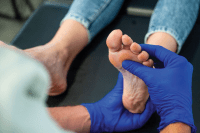Cultural competence in the delivery of healthcare is by no means a new concept. However, the knowledge nurses need to have to provide the best care possible to various population groups is being revealed by researchers in many fields of study. For example, a quick internet review of hematologic differences between Blacks and Whites shows significant differences in some average laboratory measurements. Beutler and West found that hemoglobin, mean corpuscular volume, serum transferrin saturation, serum ferritin, and white blood cell count averages of Blacks differ from those of Whites. Herman presents a detailed discussion about whether the observed differences between Blacks and Whites in mean HbA1c levels are clinically meaningful. He found that the differences couldn’t be entirely explained by differences in glycemia, sociodemographic or clinical factors, or in access to care or quality of care.
I agree with Herman that differences observed in Blacks and Whites should not be ignored because we cannot explain them. Cultural competence demands that as healthcare providers we do not take these differences for granted and view them as inconsequential. Failure to explore how knowledge of these differences may shape our caregiving and practice may mean the difference between life and death for our patients.
The current COVID-19 pandemic has given healthcare providers new insight into a difference in pulse oximetry measurements between Black and White patients. Bickler and colleagues noted the effect skin pigmentation had on pulse oximeter accuracy when the patient had low oxygen saturation. They concluded that dark skin pigmentation resulted in an overestimation of arterial oxygen saturation, especially at low saturation. Nurses frequently administer oxygen as a medical therapy that is adjusted based on the reading of a pulse oximeter. The clinical significance in COVID-19 patients is that a low level of peripheral perfusion could lead to less than adequate oxygen saturation values, resulting in hypoxemia. Hypoxemia is a major problem for COVID-19 patients, and healthcare providers frequently use pulse oximetry readings to determine if hospitalization is warranted or if supplemental oxygen is needed.
Sjoding and colleagues (observed COVID-19 patients who identified their race as Black or White and had arterial oxygen saturation of <88% despite an oxygen saturation of 92% to 96% on pulse oximetry. They found the Black patients had three times the frequency of hypoxemia that was not identified by pulse oximetry as White patients. This finding has major implications for COVID-19 patients whose level of care in part is determined by use of pulse oximetry. Reliance on pulse oximetry to triage patients or determine oxygen level needs may create and increased risk for hypoxemia for Black patients. As nurses care for patients with COVID-19 and other conditions, it is important to determine if your patient is at risk for hypoxemia and at increased risk because they are Black.
As healthcare providers rely more on the use of technology to make decisions about care, awareness of the impact of skin color, race, and other factors and the potential for increased risk based on these factors is important.
References
Beutler E, West C. Hematologic differences between African-Americans and whites: The roles of iron deficiency and alpha-thalassemia on hemoglobin levels and mean corpuscular volume. Blood. 2005;106(2):740-5. doi:10.1182/blood-2005-02-0713
Bickler PE, Feiner JR, Severinghaus JW. Effects of skin pigmentation on pulse oximeter accuracy at low saturation. Anesthesiology. 2005;102(4):715-9. doi:10.1097/00000542-200504000-00004
Herman WH. Are there clinical implications of racial differences in HbA1c? Yes, to not consider can do great harm! Diabetes Care. 2016;39(8):1458-61. doi:10.2337/dc15-2686
Sjoding MW, Dickson RP, Iwashyna TJ, Gay SE, Valley TS. Racial bias in pulse oximetry measurement. N Engl J Med. 2020;383:2477-8. doi:10.1056/NEJMc2029240
Your input is vital in assuring that the American Nurse Journal is a valuable resource to your practice. Please consider sending an electronic Letter to the Editor to share your opinion, nursing experience and continue the conversation about nursing care.

















